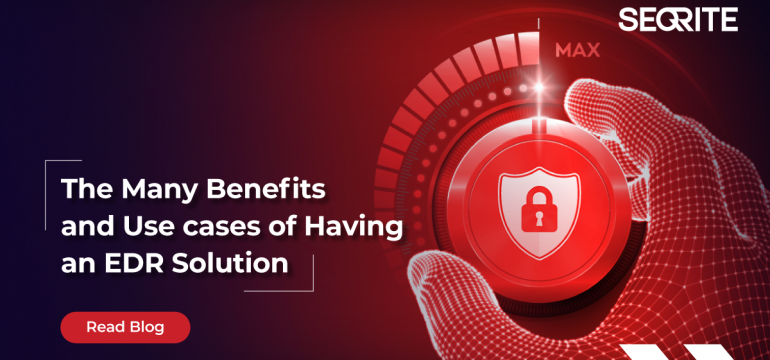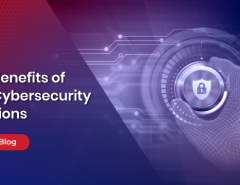In today’s rapidly evolving threat landscape, Endpoint Detection and Response (EDR) solution has become an indispensable tool for modern businesses. EDR is a cutting-edge technology that monitors end-user devices, including laptops, tablets, mobile devices, IoT devices, and servers. It detects and responds to cyber threats like ransomware, malware, and other malicious activities in real-time.
The importance of EDR for modern businesses cannot be overstated. According to DataProt, a staggering 560,000 new viruses are identified daily, adding to the over 1 billion viruses currently in existence. This alarming rate of cyber threat proliferation poses a significant challenge for businesses to protect themselves effectively. Let’s look at the benefits and use cases of EDR solutions.
EDR solutions provide several critical benefits:
- Real-time visibility: EDR offers continuous monitoring of endpoint activities, allowing security teams to detect and respond to threats promptly.
- Advanced threat detection: Unlike traditional antivirus solutions, EDR leverages advanced analytics and machine learning to identify anomalies and suspicious behaviours that might indicate a cyber-attack.
- Quick incident response: EDR facilitates rapid responses to security incidents by promptly alerting and providing insights into the type of threats, minimizing the impact of potential breaches.
- Proactive threat hunting: EDR enables cybersecurity experts to proactively hunt for potential threats within a network, uncovering hidden vulnerabilities before they can be exploited.
- Data protection: With endpoints often storing sensitive information, EDR ensures that data remains encrypted and unauthorized access is prevented.
- Business continuity: EDR helps maintain business continuity and avoid financial losses by preventing disruptions caused by successful cyber-attacks.
- Remote work security: As remote working becomes more prevalent, EDR extends protection beyond the office perimeter, securing devices wherever they connect to the network.
Key EDR solutions use cases for business protection
Endpoint Detection and Response (EDR) solutions play a crucial role in safeguarding organizations against various cyber threats. By leveraging advanced techniques such as behavioural analysis, machine learning, and threat intelligence, EDR provides comprehensive protection for businesses. Let’s explore three key use cases where EDR proves invaluable.
Detecting Advanced Persistent Threats
Advanced Persistent Threats (APTs) pose significant risks to business continuity and data security. These sophisticated attacks often employ advanced evasion techniques, making them challenging to detect using traditional security measures. EDR solutions offer real-time visibility into endpoint activities, enabling organizations to identify and respond to APTs before they cause substantial damage.
EDR systems continuously monitor endpoint behaviour, analysing patterns and comparing activities against known indicators of compromise (IOCs). This proactive approach allows security teams to detect malicious activities indicative of an APT attack swiftly. By integrating with threat intelligence platforms, EDR solutions provide up-to-date information on emerging APTs, enhancing the organization’s ability to respond promptly.
READ Why Endpoint Detection and Response (EDR) Is The Future of Endpoint Protection?
Responding to Ransomware Attacks
Ransomware attacks have become increasingly prevalent, causing significant financial and reputational damage to businesses. EDR solutions offer robust protection against these threats through advanced behavioural detection capabilities. By leveraging artificial intelligence and machine learning, EDR can identify and halt anomalous activities, such as sudden encryption processes, which are typical indicators of ransomware behaviour.
EDR solutions provide ransomware protection even without an active internet connection, making them invaluable for remote workers and travellers. When an employee inadvertently opens an infected document, an AI-powered EDR can detect the ransomware and prevent encryption. This capability is crucial in mitigating the impact of potential attacks.
Identifying Insider Threats
Insider threats, whether accidental or malicious, pose unique challenges to organizations’ security. EDR solutions are uniquely positioned to address these threats effectively. By monitoring endpoint activities in real-time, EDR can detect suspicious behaviour that may indicate an insider threat.
EDR systems analyse user behaviour, network communications, and file access patterns, looking for anomalies that signify potential malicious intent. This proactive approach enables security teams to investigate and respond promptly to potential insider threats. EDR solutions can also create custom alerts to detect large amounts of data structuring, unauthorized use of cloud storage tools, or illegal activities such as piracy.
By implementing Seqrite EDR, businesses can significantly enhance their cybersecurity posture and protect themselves against a wide range of threats. The comprehensive visibility and advanced detection capabilities provided by EDR make it an essential tool in today’s ever-evolving threat landscape.




